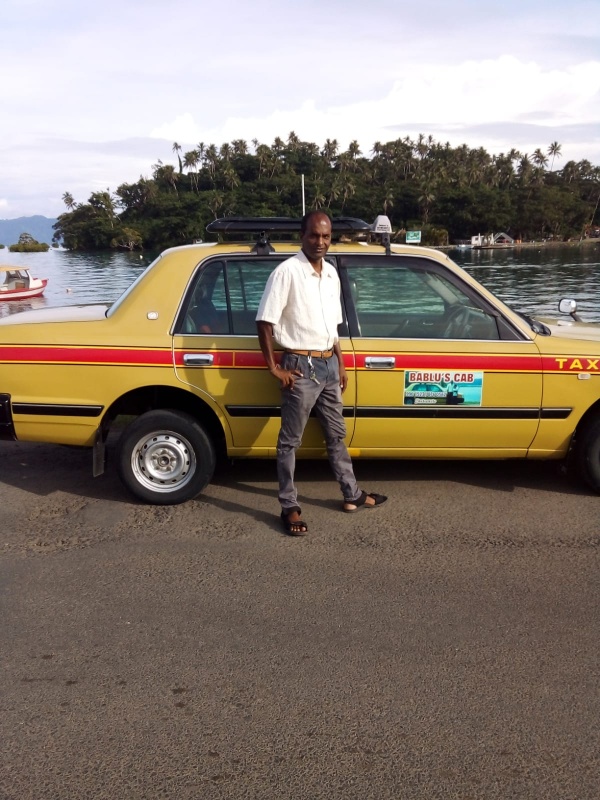As a visitor, getting around Fiji with public transport involves a blend of transportation options that may differ from what you’re used to in Australia. Let’s explore the various ways you can navigate Fiji’s stunning landscapes and vibrant communities!
1. Buses and Minivans

Buses and minibuses are by far the main form of public transport in Fiji. There are about 1,600 buses and minibuses in Fiji, operated by more than 50 different companies. Brightly-painted buses are a common sight, adorned with lively decorations. These are great for traveling between towns and cities. The buses, though old, offer cushioned seats and open-air windows, providing a unique and enjoyable experience. Travelers find it to be a fun local adventure.
Express buses, operating on a schedule, efficiently connect Fiji’s towns and cities. The journey from Nadi to Suva, for instance, takes less than six hours and costs around FJ$22. Express buses vary in quality, but most offer amenities like air-conditioning and comfortable coach seats. Some may even entertain passengers with movies on long-distance trips.
Both local and express buses operate on an e-ticket system, allowing passengers to purchase disposable tickets directly from the driver using cash. It’s a straightforward and convenient way to explore the beauty of Fiji’s main islands.

Minivans, often privately operated, offer a more flexible and informal way to travel, stopping at various points to pick up and drop off passengers. As you might expect, some of these minivans operate without proper licenses and sometimes take a less than professional approach to safe driving.
You’ll also see utes/4WDs/SUVs with tarp covers and benches bolted on back, ferrying people between towns and villages. We advise that you skip these public transport options because they’re unsafe.
Difference from Australia: Fiji’s buses and minivans operate on a more relaxed schedule, commonly referred to as “Fiji Time.” Schedules may be flexible, so it’s a good idea to check with locals or transportation providers for the most accurate information.
2. Taxis

Taxis are readily available in urban areas and are a convenient option for getting around. Ensure the taxi has a working meter, or agree on a fare before starting your journey. Taxis in Nadi and Suva are affordable and regulated by the government. Fares start at about FJ$2 (with a small surcharge between 10pm-6am), plus about 12c per 100m.
Always choose a registered taxi with a meter and a plate starting with “LT.” Taxis are convenient for town-to-town or rural drives, like exploring between attractions. For such trips, negotiate a price upfront and clarify if it’s for your exclusive use without picking up other passengers.
Difference from Australia: Taxis in Fiji might not always have meters, so it’s essential to establish the fare before setting off. Additionally, sharing a taxi with others heading in the same direction is a common practice.
3. Rental Cars
For more independence in exploring Fiji, renting a car is an excellent choice. Several international and local rental agencies provide a range of vehicles. Look for companies that are members of the Fiji Rental Car Association (FRCA) as these are more likely to comply with Fiji’s Land Transport Authority regulations.

Difference from Australia: Fijians drive on the left side of the road, similar to Australia, but road conditions may vary, especially in rural areas. Keep an eye out for local driving habits and road signs.
4. Boat Transfers, Water Taxis and Ferries

Given Fiji’s island-rich environment, boat transfers, water taxis and ferries are crucial for inter-island travel. These services connect the main islands and remote, picturesque locations. Boat transfers organized by island resorts are a quick and affordable way for guests to travel between the mainland and nearby islands, like the Mamanuca Islands, Beqa Island, Malake Island, and Robinson Crusoe Island.
Water taxis or chartered boats offer a premium service, taking passengers directly to their desired destinations and often providing activity packages with stops along the way.
Difference from Australia: Island-hopping in Fiji often involves smaller vessels. Embrace the scenic routes and enjoy the turquoise waters as you travel between islands.
5. Domestic Flights and Charter Air Services

For quick travel between major islands, domestic flights are available. Fiji Airways and other local carriers operate regular services. Domestic airlines operate between major destinations in Fiji like Nadi, Suva, Taveuni, the Lau Islands, Vanua Levu, and Kadavu. While airports are basic, some domestic flights can compete in price with ferries to outer islands.
For a premium and efficient option between Nadi and the Mamanuca/Yasawa Islands, chartering a helicopter or seaplane is popular. These services can take passengers directly to island resorts, typically requiring a minimum of two passengers for booking.
Difference from Australia: Domestic flights might be smaller planes, providing a unique flying experience. Be prepared for more personal interactions with the flight crew.
6. Tips for Visitors
- Fiji Time: Embrace the local concept of Fiji Time, where schedules are more relaxed.
- Friendly Locals: Don’t hesitate to ask locals for guidance; Fijians are known for their warm hospitality.
- Cash Payments: Many smaller transportation services prefer cash payments, so it’s advisable to carry Fijian dollars.
Navigating Fiji’s transportation system is an adventure in itself. Whether you choose the vibrant buses, scenic water taxis, or domestic flights, each mode offers a different perspective of this enchanting destination. So, hop on board and enjoy the journey through the heart of the Pacific!





